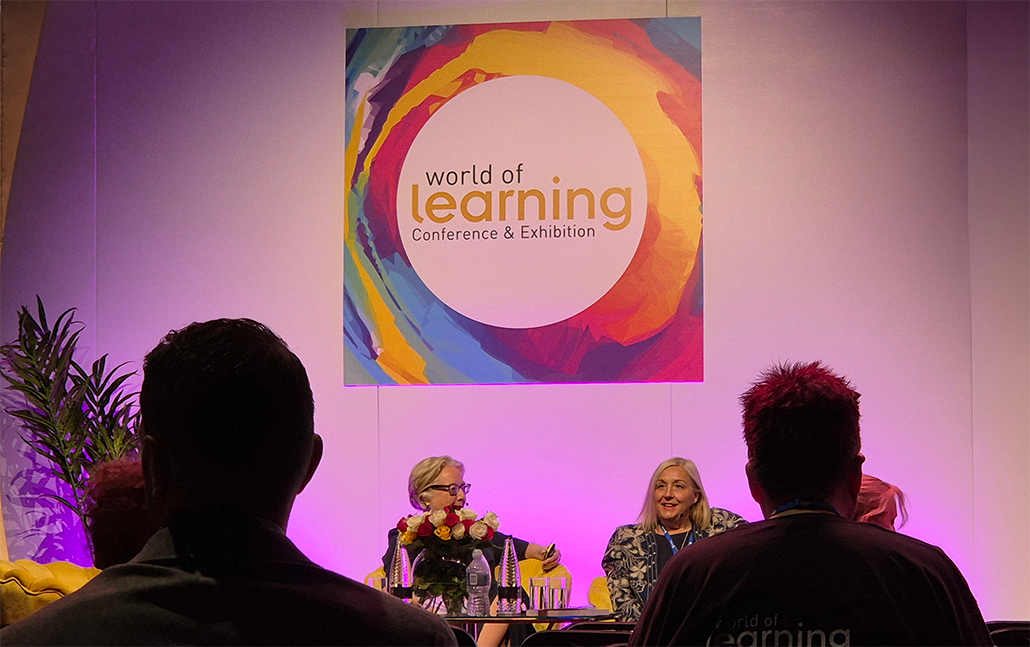Sarah Cook and Steve Macaulay provide advice on staying ahead of change.
Today’s critical imperative is to keep up with change and not to let up. Successful organisations are much more likely than ever before to be in a state of continuous change and companies such as GE, HP and Nissan have taken this mantra on board, recognising that change in their organisation needs to be continuous, disruptive yet embedded into their fabric.
At the same time, so many organisations appear to have failed to take up this important message. Managers at defunct or shrunken companies MFI, Kodak, HMV, Comet, Borders, and BlackBerry all, we’re sure, must have felt confident that they were up to speed with changes that were occurring in their marketplaces.
It is a sad fact that they are not alone: many organisations leave important changes until it is too late, so while it is hard to keep abreast of change when all apparently appears well, it is vital to anticipate and keep up with trends. Leave it too late and, as change looms large, organisations can be overwhelmed as they desperately put energy into the wrong things and lose focus.
This article considers how to keep up with and anticipate changes in a way that increases the likelihood that you will stay ahead and not end up in the organisational graveyard. We have so far described organisations, but this of course also applies to individuals and teams. L&D professionals themselves need to keep up with the latest trends and know the tools and techniques of how to do so.
The nature of today’s changing world
The Volatile, Uncertain, Complex and Ambiguous (VUCA) world we see around us is affecting each and every organisation and individuals in a host of ways. A key challenge for managers and L&D is to move away from generalities: how are wider changes affecting your organisation, your customers and your team?
Some of the biggest changes are as a result of technology, where in the working lifetime of both of the authors the spread of IT and communications and the Internet including social media have transformed the way we interact, live and work. Organisations are as likely to be ‘clicks’ as ‘bricks’, with virtual and actual locations in multiple centres.
The workforce is becoming increasingly diverse in terms of age, ethnicity and gender. Added to this, are demographic changes, as the baby boomers retire and generations X and Y take over with different expectations and demands.
In addition, the global economy is shifting its centre of gravity, and so a downturn in China’s economy impacts the rest of the world, alongside falling oil prices which have had huge knock-on effects. In Europe the migration crisis and Britain’s possible exit from the EU may potentially have an impact on the way organisations do business.
All these changes affect the way we work, the roles available to us, the systems and approaches we use and the cultures they generate.
What must we change?
Keeping abreast of change means we need to be aware of what changes are needed and adapt and redefine ourselves where necessary; we must be agile in responding to change and also we need to be able to take on board how to react appropriately. It implies that a keen ear be kept on the stakeholders affected, whether they are customers, users, key managers within the organisation or influencers, people without a managerial title but who have an important impact on the outcome of change.
We must consider the ways we are running organisations to ensure they are compatible with change and sometimes we may need to look at doing business entirely differently. Communications company Nokia started off in forestry and making Wellington boots; it has now moved out of consumer mobile communications which it once dominated and into corporate networking.
Its company website proclaims “Nokia’s long history is marked by change and reinvention”. Like Nokia, it is quite likely that some organisations might be confronted with painfully moving into a wholly different business.
From a learning perspective, L&D professionals need to be aware of the changes in the ways people learn – classroom, books, ‘blended learning’, e-learning, m-learning, virtual learning, videos, Google for example – and reflect this in their learning offering.
Engaging others to staying relevant
Keeping abreast of change means working at an organisational level and also at an individual one. The agile organisation and individual must learn to respond quickly to changing circumstances. It is important that participation and discussions take place to build individual support and engagement. This means engaging colleagues in all changes, for example going over new processes as walk-through sessions and holding experiential sessions to identify suggestions and gain new ideas from the ground up.
Involvement and communication are essential throughout the stages of change:
Awareness – the first stage undoubtedly is developing awareness of what changes need to happen.
Understanding and insight – this must then be translated into an understanding and insight throughout the organisation and team of what this change means for the organisation as a whole and every person in the team.
Buy-in needs to happen to ensure that change actually gets implemented.
Action – lastly, momentum needs to build up into action on a regular and continuous basis, recognising that there is a big pull to try and return to old ways.
Useful tools to analyse changes
Two well-proven frameworks, SWOT and PESTEL, help to gather together what is known about trends and provide a valuable basis to open up discussion and plan actions. SWOT analysis is a tool used to identify and categorise internal and external factors (Strengths, Weaknesses, Opportunities and Threats). PESTEL is used to monitor the business environment in terms of the Political, Economic, Social, Technological, Environmental and Legal factors that may impact the organisation in the future.
These frameworks are deceptively simple; quite a bit of preparation needs to take place beforehand in order to use them in a group context. Individuals can put their ideas under each of the categories in the two frameworks on Post-it notes and these can be collated at a later stage. It is important to target and discuss the areas of greatest need and also to follow up with more work later on, so clear actions and responsibilities are determined in response to anticipated changes.
It is tempting to walk away from doing these exercises and think they are complete. They need to be repeated at regular intervals, for example every six months and also at different levels in the organisation to ensure both commitment and understanding.
Analysing the macro environment using the PESTEL framework
This framework analyses the impact of Political, Economic, Social, Technological, Environmental and Legal developments in the macro environment, both national and global, on the future prospects for the business.
Political
Economic
Social
Technological
Environmental
Legal developments
Using the PESTEL framework as a guide, use the headings as a checklist to pin down in more detail the key trends over the next few years which you believe will have the greatest impact on your organisation.
SWOT analysis
A step-by-step approach to using a SWOT
Step 1: List the key strategic issues/factors inside or outside the organisation that significantly impact the long-term competitive position of your organisation, using the SWOT matrix.
Strengths – potential factors that make your company more competitive than your direct competitors
Weaknesses – potential limitations and defects ingrained in your company and/or weak factors relative to direct competitors
Opportunities – future factors that allow your organisation to improve its relative competitive position
Threats – those future factors that reduce your organisation’s relative competitive position.
Step 2: Identify your organisation’s strategic fit given its internal capabilities and external environment: how closely does strategy match need?
Step 3: Formulate alternative strategies to address key issues.
Step 4: Place the alternative strategies in one of the four quadrants in the SWOT matrix.
strategies that combine:
- Internal strengths with external opportunities are the most ideal mix, but require understanding on how the internal strengths can support weaknesses in other areas;
- Internal weaknesses with opportunities must be judged on investment effectiveness to determine if the gain is worth the effort to buy or develop the internal capability;
- Internal strengths with external threats demand knowing the worth of adapting your organisation to change the threat into opportunity;
- Internal weaknesses with threats create your organisation’s worst-case scenario. Radical changes are likely to be required.
Opportunities
Understanding the opportunity does not stop there, for action to take place there needs to be widespread communication and confidence-building so that people are able to pursue that opportunity and they are encouraged to do so.
Second curve management: how to apply the Sigmoid Curve to change
Another useful change tool was suggested by management thinker, Charles Handy, who uses the concept of the Sigmoid Curve to describe reaction to change, of both people and organisations. This S-shaped curve can be applied to the life-cycle of products, organisations, teams and relationships.
The curve symbolises the fact that growth starts slowly at first, dips and falters through its experimental stage before rising to a pinnacle of success, after which without renewal action, there is decline.
The antidote to decline is to start a second curve at the right time, which is when success is still growing and before the organisation or individual starts to experience a plateau. Starting a second curve is not easy on the crest of the wave of success and almost certainly requires a new team, resources, and space to get it off the ground but it must then be integrated and accepted back into the organisation.
Further actions to stay relevant
Here are some more suggestions on how to keep up with changes that are taking place:
- Attend trade or professional events
- Visit other companies for ideas
- Look around you at consumer changes both by reading and watching what is happening in the wider marketplace
- Recruit people from other organisations to give a fresh perspective — consider ‘best practice’ recruits outside your industry as well as those from within
- Put change and trends on the agenda at every senior management meeting.
And finally
We suggest you check out the changes suggested by the completed frameworks – are you at a sufficient state of change readiness and have you reviewed your plans recently? Consider six questions to highlight how effectively your organisation is keeping abreast of change.
Vision: How closely is this aligned to changes taking place in the environment?
External environment: How regularly do we monitor and respond to our external environment? What are the key factors?
Capabilities: How well do we reassess and update our distinct capabilities?
Timing: Are we reviewing often enough to pick up change?
Scope: Are we selecting the right areas to put our energy into making changes?
Implementation: Do we make sure we fully put into practice what needs to change?
Charles Handy emphasises that: “The world keeps changing. It is one of the paradoxes of success that the things and the ways which got you where you are, are seldom those that keep you there.”
We conclude by leaving you with a direct challenge: What are you doing to tackle your biggest organisational and individual change issues? Is it enough?
About the author
Cook is Managing Director of the strategic leadership and change management specialists, The Stairway Consultancy Sarah can be contacted at email on sarah@thestairway.co.uk.
Steve Macaulay is an associate at Cranfield School of Management’s Centre for Customised Executive Development. Steve can be contacted by email on s.macaulay@cranfield.ac.uk.



